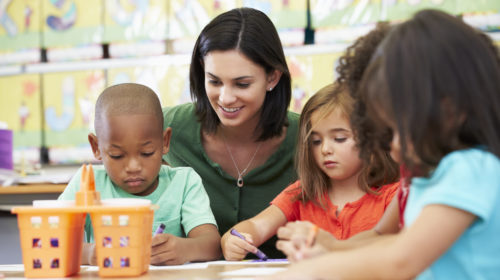Collaborative Learning in a School Environment
Most of us believe in the approach of collaborative learning. We as educators try to engage our students in more and more collaborative activities. However, when we break the students into groups, they unsuccessfully gravitate towards their laptops. Promoting true collaboration is difficult to do well, but when done successfully collaborative teams attain a higher level of thinking and information retention is also high. Students are able to retain more information through a collaborative learning environment than most other techniques. Here are some tips on achieving collaborative learning in your classrooms:
1. Establish Group Goals
Effective collaborative learning involves establishing group goals as well as individual accountability. This will keep the group on task and students will avoid ambiguity. Another tip is to define the goals and objectives of the group.
2. Keep Groups Small
You need a group of 4 to 5 students. If the group is too small it will lack diversity and groups that are too big are hard to manage and create “freeloading” where more students are less responsive. These students tend to phase out and let the more verbal students do all the work.
3. Create Learning Activities that are Complex
Students need a reason to collaborate. With simple activities students can attempt these on their own. Complex activities are challenging for students , require more engagement and are more stimulating. Students need a project that can be researched and discussed. Activating a thought process can ensure optimal learning and maximum participation.
4. Build Trust and Open Communication
There must be successful interpersonal communication in this type of strategy. Assignments should encourage team members to explain concepts thoroughly of each member of the group. Open communication is vital to achieving the group’s goals. Roles may also be allocated to increase communication and better develop ideas.
5. Create a Pre and Post Test
A good way to ensure that the group benefits from this type of instruction and engagement is to create some sort of a pretest and post test. This will ensure whether the group is learning or not. An assessment also gives the group a goal to work towards. It also guarantees that the group prioritizes the tasks.
6. Try Using Real World Problems
This is one way of introducing project-based learning. Using open-ended questions can be very involving. One can use everyday problems to achieve this. Real life problems are the perfect scenario for collaborative learning and could also increase participation within the group. More positive learning can be achieved from analyzing real world situations.
Learning is social in nature. Using different mediums be it with textbooks, discussions, technology or projects will generate new ideas. Having perspectives from other groups or individuals can also impart varying viewpoints that can be shared with the group as a whole. Collaboration is a learned process and needs to be managed correctly in order to be effective.




